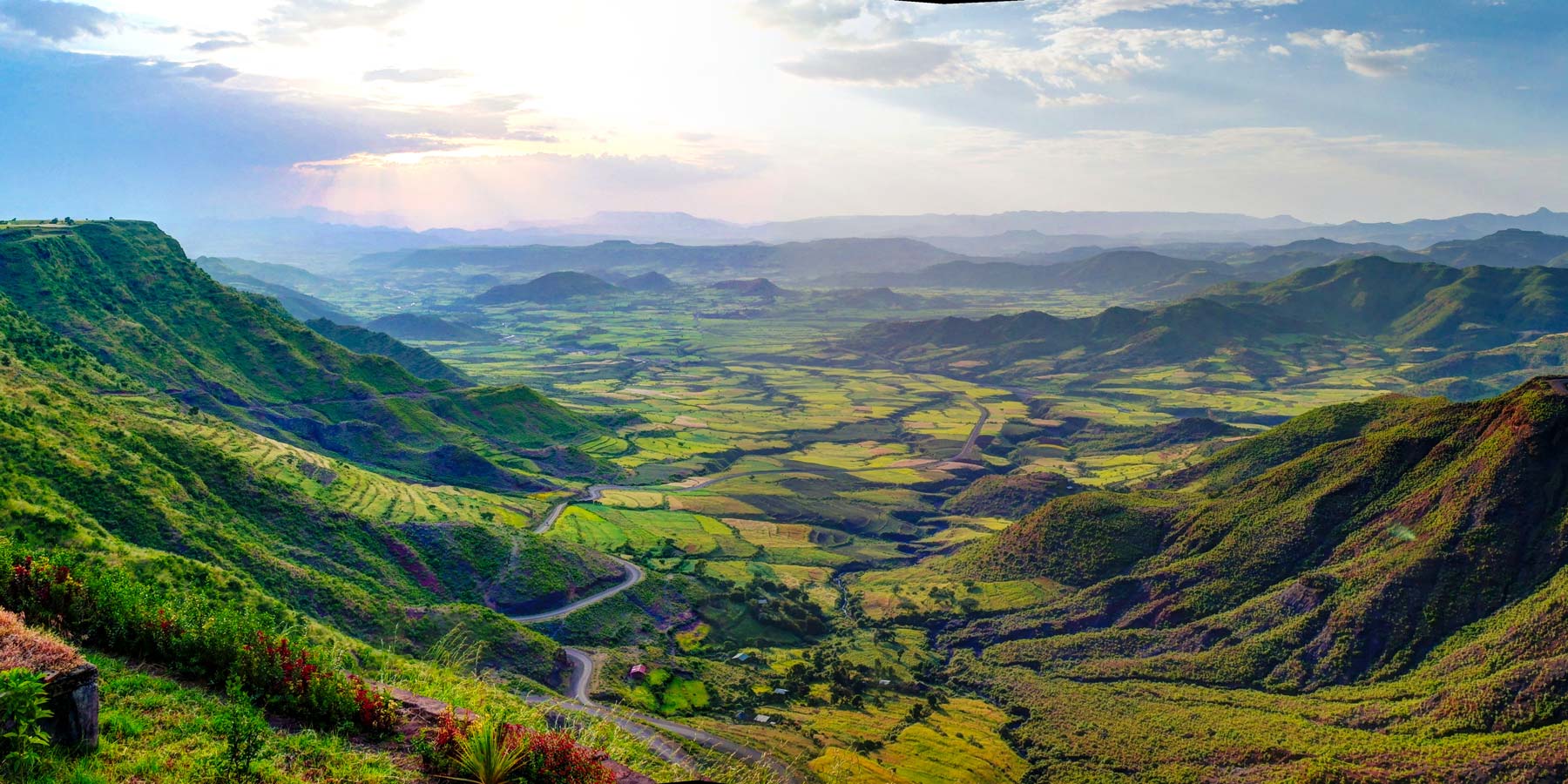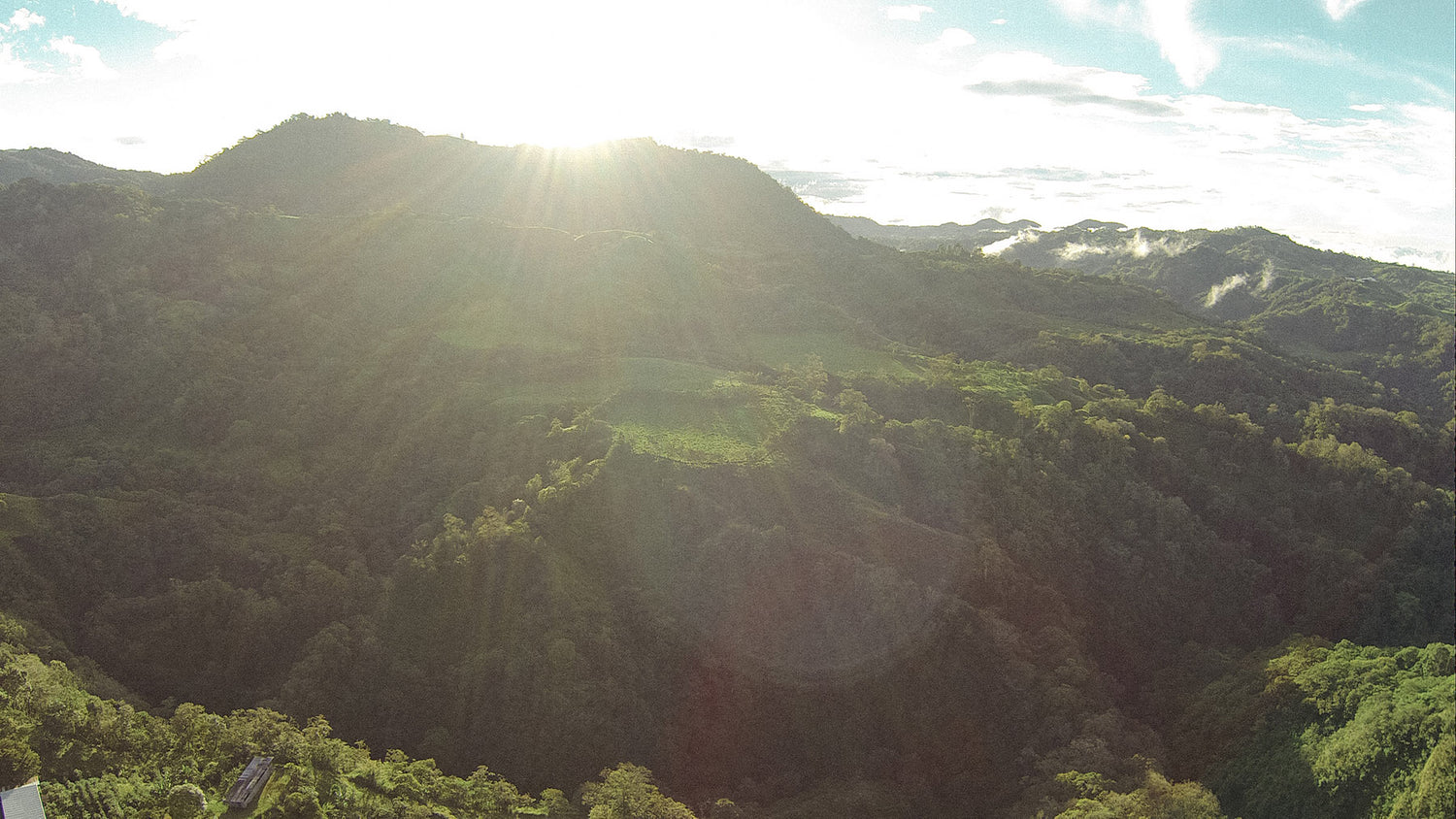Ethiopia, a real coffee country with a unique history. Coffee starts its journey into the wide world right there. That is why Ethiopia is still known as THE country of origin of coffee . No wonder, because the African country offers excellent conditions for growing coffee and even 13 months of sunshine... How is that supposed to work? Just a little side fact: the time in Ethiopia comes from its own calendar, which contains 13 months and starts on September 11th. Almost 100 million people live in Ethiopia itself. The cultivation of coffee plays a major role in society. But not everything at once - let's track down the coffee-growing country of Ethiopia step by step.

Country of origin of coffee
Coffee, or rather the coffee cherry, originated in Ethiopia. The legend of the shepherd Kaldi says that his goats ate the red coffee cherries and then started jumping around happily. This is said to have happened around the 9th century .
Kaldi was so fascinated by the invigorating effect of the cherries that he tried the fruit of the coffee plant himself . Kaldi noticed the stimulating effect and told the monks about it. When the monks tried the fruit, they simply found it too bitter. In the end, they threw the cherries into the fire... A brilliant move , as it turned out later.
A fragrant smell spread, which aroused the monks' renewed interest in the fruit. They took the roasted seeds out of the fire and examined them in detail. They then decided to prepare an infusion from the roasted coffee beans. The monks found the infusion, probably the first coffee drink, to be tasty and stimulating. The monks considered coffee to be a gift from God. They used it primarily to keep their minds alert during prayers.
Coffee in Ethiopia as an everyday good
While coffee can be drunk almost anywhere and at any time in western countries, including Germany, things are a little different in Ethiopia. In Ethiopia, the shared enjoyment of a fresh cup of coffee is still a real celebration .
There is a very special Ethiopian coffee ceremony that is a major cultural component. Coffee is also a central economic sector! Around 15 million people, or one sixth of the entire population, work in the coffee sector . However, not many people can afford a coffee machine or another method of preparation. Therefore, Ethiopian coffee preparation is very different from what we know from everyday life.

Ethiopian coffee ceremony in detail
The Ethiopian coffee ceremony works very differently than, for example, our coffee klatch . The ceremony begins with green coffee, which is first washed and then freshly roasted in a large roasting pan . The beans are then ground relatively coarsely with a mortar. The freshly ground coffee is then put into the so-called Jebena . This is a typical Ethiopian clay pot in which the coffee is brewed directly over the fire with hot water. It is very important during the ceremony that people take time to enjoy it. Typically, Fenidsch (similar to popcorn) or Kollo (roasted grain) is served.

This is how coffee is cultivated in Ethiopia
Ethiopia is home to numerous Arabica varieties . What makes Ethiopian coffee special is the diverse subspecies and numerous undiscovered wild coffee varieties that thrive in the wild forests and small, private plantations or gardens. However, commercial coffee cultivation takes place primarily in the wooded highlands in the southwest and east of the country.
The economically most important regions are: Harrar, Ghimbi, Yirgacheffe & Sidamo . The coffee varieties there are also named after the regions. There are also smaller, equally important plantations that specialize in microlots: Guji , Illubabor, Amaro, Kaffa, Tepi, Welayta, Bebeka, Borena, Arsi & Bale.

The wide variety of varieties
Most of the coffee from Ethiopia comes from small plantations run by small farmers. In some regions there are also countless wild coffee varieties that grow in the vast forests of Ethiopia and are sometimes even harvested. There are also so-called garden coffees, which consist of mixed cultivation methods and varieties, small plantations where only coffee is cultivated and commercial farms, of which there are not too many. The transitions between the different cultivation methods are often fluid.
Coffee processing in Ethiopia
Since coffee in Ethiopia mostly comes from small plantations and even garden coffee is traded, the beans are usually collected at central processing stations of cooperatives or the small farmers sell their coffee to the cooperatives.
Most farmers cannot afford to have their own processing station, or they lack the necessary expertise to process the cherries. Due to the fact that the cherries come from numerous small farmers , it is almost impossible to get pure coffee from Ethiopia . The variety is therefore often referred to as local heirloom. This is a mixture of wild coffee plants that have not yet been genetically identified due to the wide variety. The coffee is harvested between October and November .

This is what coffee from Ethiopia tastes like
First of all, we must make it clear that coffee is very dependent on the climatic and natural influences around the growing area. Therefore, the different harvests can taste different . In addition to the growing area and the properties there, the taste also depends on the variety and the processing method. Washed coffee from Ethiopia tastes very nuanced and impresses with its light body. The taste reveals fruity-floral notes that are paired with fine accents that are reminiscent of black tea. Naturally processed coffee tends towards the berry flavor variety, which is rounded off with chocolate accents and a delicate sweetness.
Coffee from Ethiopia is particularly digestible!
Coffee from Ethiopia is a real highland coffee . The cherries usually grow at over 2,200 m and are therefore particularly digestible. Why? Caffeine is the coffee plant's defense substance, which protects it from insects and other pests. At such lofty heights, however, there is hardly any habitat for these pests, which is why coffee from Ethiopia usually produces less caffeine . This makes the coffee a little lighter and more digestible than other varieties that are grown at a little lower altitudes. #staywild


